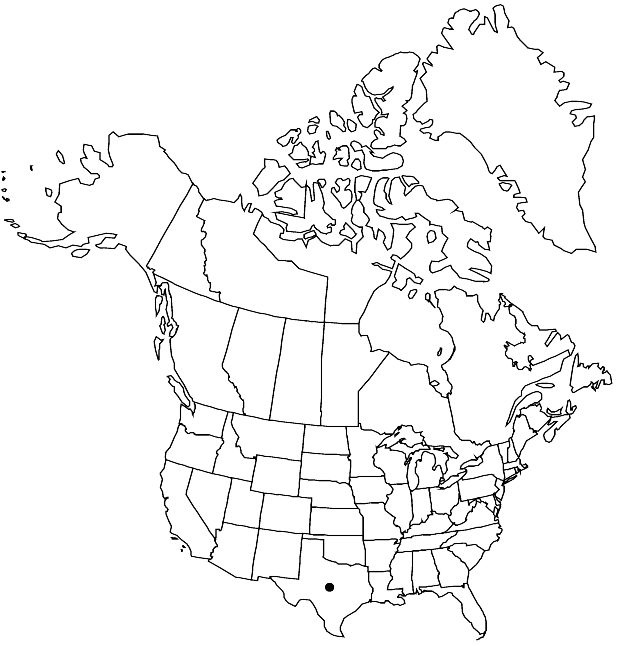Cardamine macrocarpa
Zoë 5: 233. 1906.
Annuals; glabrous or sparsely puberulent. Rhizomes absent. Stems (simple or several from base), erect or decumbent, (flexuous or straight, narrowly winged-angled), unbranched or branched distally, (1.4–)2–4.5(–5.3) dm. Basal leaves (soon withered), not rosulate. Cauline leaves 3–9, middle ones 5–9-foliolate, petiolate, leaflets petiolulate or subsessile; petiole 1–3 cm, base not auriculate; lateral leaflets similar to terminal, blade often smaller, with oblique base, distal leaflets subsessile, blade smaller and narrower distally; terminal leaflet (petiolule 0.2–0.8 cm), blade usually broadly ovate to narrowly lanceolate, rarely oblong, 0.7–2 cm × 2–10 mm, base cuneate to rounded, margins repand, crenate, or 3-lobed. Racemes ebracteate, (rachis slightly to strongly flexuous or geniculate). Fruiting pedicels horizontal to divaricate or ascending, (3–)4–9(–12) mm. Flowers: sepals oblong, 2–3.5 × 0.7–1.2 mm, lateral pair not saccate basally; petals white, linear, 6–8 × 0.7–1 mm; filaments: median pairs 4–5 mm, lateral pair 3.5–4 mm; anthers oblong, 0.7–1 mm. Fruits linear, (2.5–)3–4.6 cm × 1.7–2.1 mm; ovules 14–22 per ovary; style 1–3 mm. Seeds dark brown, oblong, 2–2.5 × 0.9–1.2 mm.
Phenology: Flowering Mar–Sep.
Habitat: Rock crevices and ledges, gravel bars of mountain streams, moist rocky stream banks, shaded loamy forest floors
Distribution

Tex., Mexico (Coahuila, Nuevo León).
Discussion
Cardamine macrocarpa is known from the Chisos Mountains, Brewster County.
The characters by which var. texana is said to differ from var. macrocarpa are artificially drawn, and the style length, presence or absence of indumentum on the pedicels, and degree of flexuosity of the raceme rachises do not correlate and can vary within a given area. For these reasons, we do not recognize infraspecific taxa in Cardamine macrocarpa.
Selected References
None.